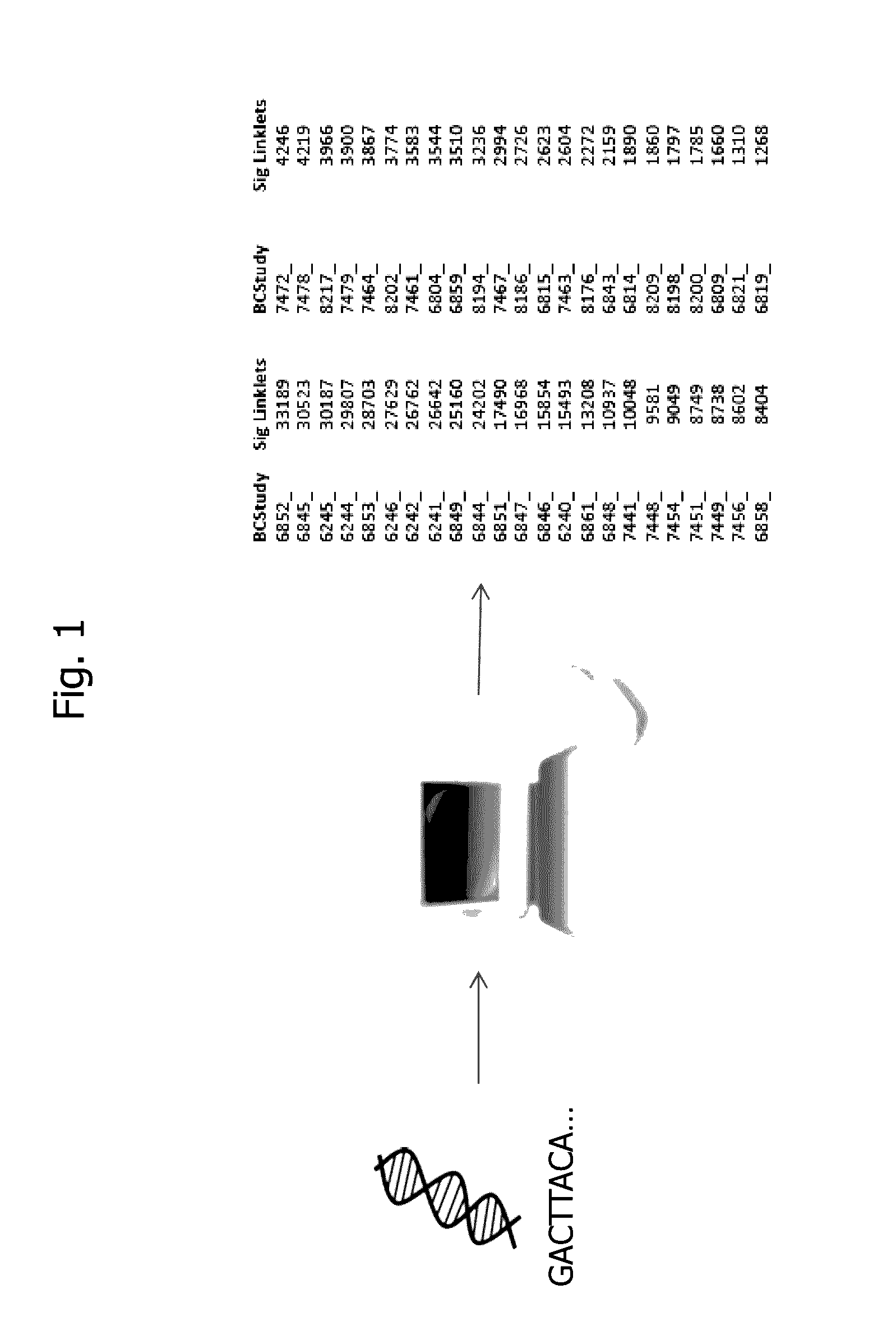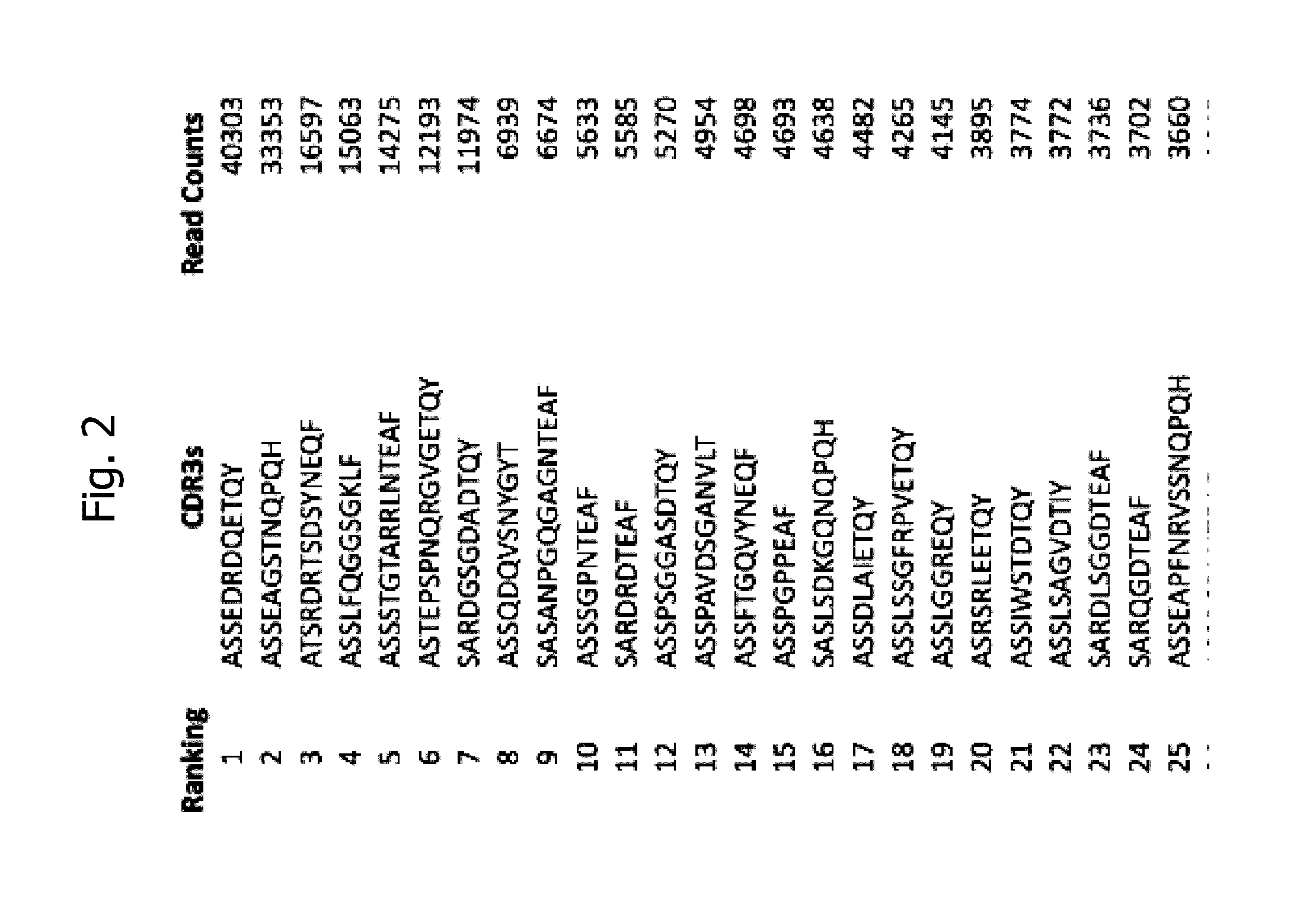Method for identifying disease-associated cdr3 patterns in an immune repertoire
a disease-associated cdr3 and immune repertoire technology, applied in the field of methods for recognizing disease-associated immune repertoires, can solve the problems of inability to assess the information for diagnostic purposes using conventional methods, and the response is depleted
- Summary
- Abstract
- Description
- Claims
- Application Information
AI Technical Summary
Benefits of technology
Problems solved by technology
Method used
Image
Examples
examples
[0038]Isolation of Peripheral Blood Mononuclear Cells (PBMCs) from Whole Blood
[0039]Whole blood from healthy subjects (control group) and patients previously diagnosed with breast cancer (patient group) was diluted with PBS buffer at 2-4× the original volume. 10 mL of whole blood collected in sodium heparin was transferred to a 50 mL conical tube and diluted with buffer to the 35 mL line. Diluted cell suspension (35 mL) was carefully layered over 15 mL of Ficoll-Paque® in a separate 50 mL conical tube. The tube was centrifuged at 400×g for 30 minutes at 20 degrees Celsius in a swing bucket rotor with no brake.
[0040]The upper layer containing PBS buffer and plasma was carefully aspirated to remove it. The cloudy mononuclear cell layer was carefully transferred to a fresh 50 mL conical tube. The tube was then filled with buffer to the 50 mL mark and centrifuged at 300×g for 20 minutes at 20 degrees Celsius. The clear supernatant was removed and the cell pellet was re-suspended in 8 mL...
PUM
| Property | Measurement | Unit |
|---|---|---|
| frequency | aaaaa | aaaaa |
| signal-to- | aaaaa | aaaaa |
| frequencies | aaaaa | aaaaa |
Abstract
Description
Claims
Application Information
 Login to View More
Login to View More - R&D
- Intellectual Property
- Life Sciences
- Materials
- Tech Scout
- Unparalleled Data Quality
- Higher Quality Content
- 60% Fewer Hallucinations
Browse by: Latest US Patents, China's latest patents, Technical Efficacy Thesaurus, Application Domain, Technology Topic, Popular Technical Reports.
© 2025 PatSnap. All rights reserved.Legal|Privacy policy|Modern Slavery Act Transparency Statement|Sitemap|About US| Contact US: help@patsnap.com



